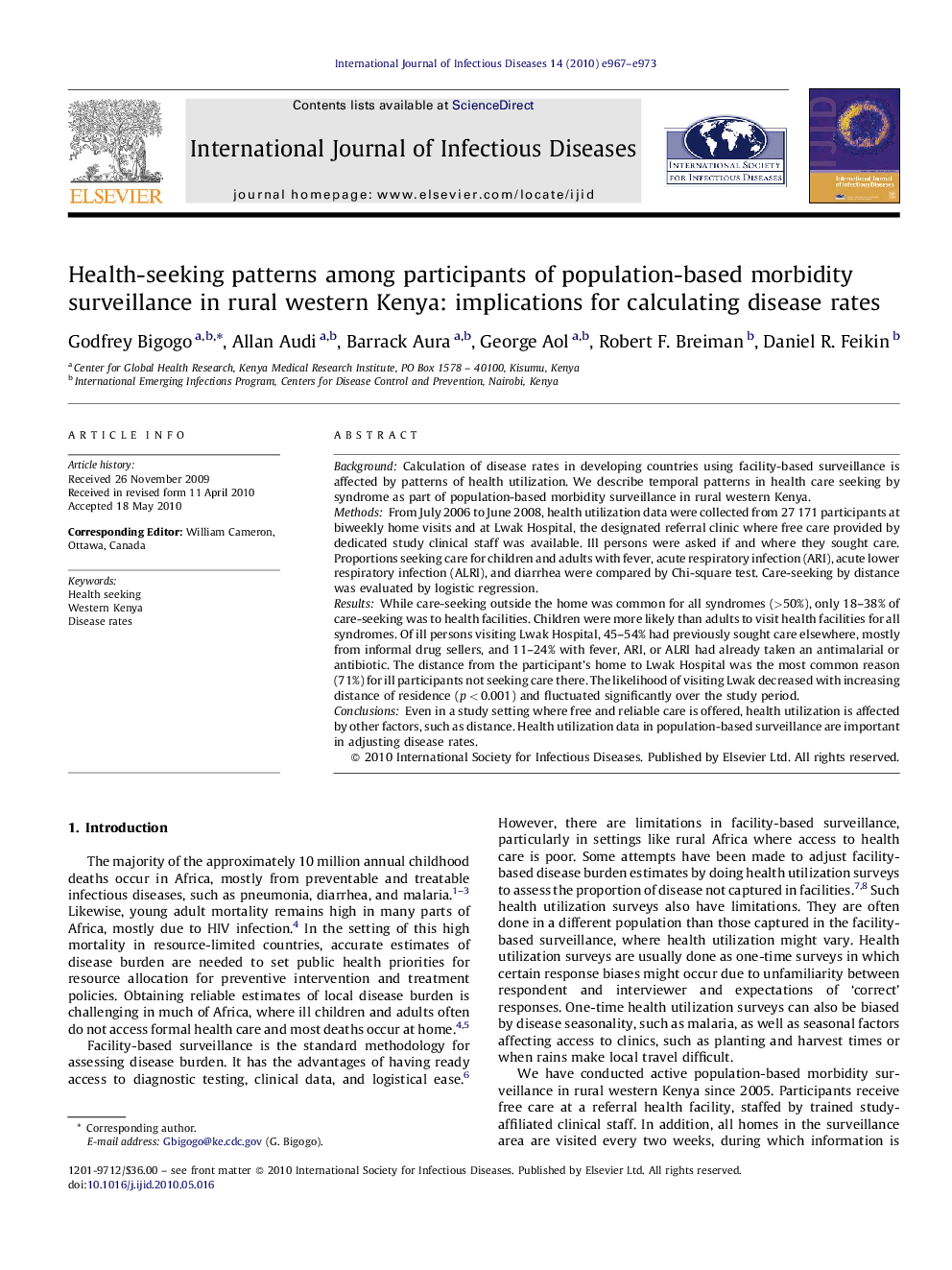| کد مقاله | کد نشریه | سال انتشار | مقاله انگلیسی | نسخه تمام متن |
|---|---|---|---|---|
| 3363817 | 1592118 | 2010 | 7 صفحه PDF | دانلود رایگان |

BackgroundCalculation of disease rates in developing countries using facility-based surveillance is affected by patterns of health utilization. We describe temporal patterns in health care seeking by syndrome as part of population-based morbidity surveillance in rural western Kenya.MethodsFrom July 2006 to June 2008, health utilization data were collected from 27 171 participants at biweekly home visits and at Lwak Hospital, the designated referral clinic where free care provided by dedicated study clinical staff was available. Ill persons were asked if and where they sought care. Proportions seeking care for children and adults with fever, acute respiratory infection (ARI), acute lower respiratory infection (ALRI), and diarrhea were compared by Chi-square test. Care-seeking by distance was evaluated by logistic regression.ResultsWhile care-seeking outside the home was common for all syndromes (>50%), only 18–38% of care-seeking was to health facilities. Children were more likely than adults to visit health facilities for all syndromes. Of ill persons visiting Lwak Hospital, 45–54% had previously sought care elsewhere, mostly from informal drug sellers, and 11–24% with fever, ARI, or ALRI had already taken an antimalarial or antibiotic. The distance from the participant's home to Lwak Hospital was the most common reason (71%) for ill participants not seeking care there. The likelihood of visiting Lwak decreased with increasing distance of residence (p < 0.001) and fluctuated significantly over the study period.ConclusionsEven in a study setting where free and reliable care is offered, health utilization is affected by other factors, such as distance. Health utilization data in population-based surveillance are important in adjusting disease rates.
Journal: International Journal of Infectious Diseases - Volume 14, Issue 11, November 2010, Pages e967–e973